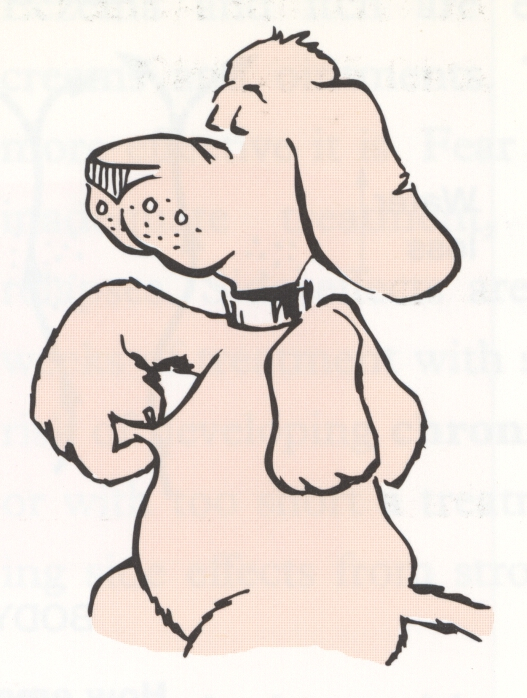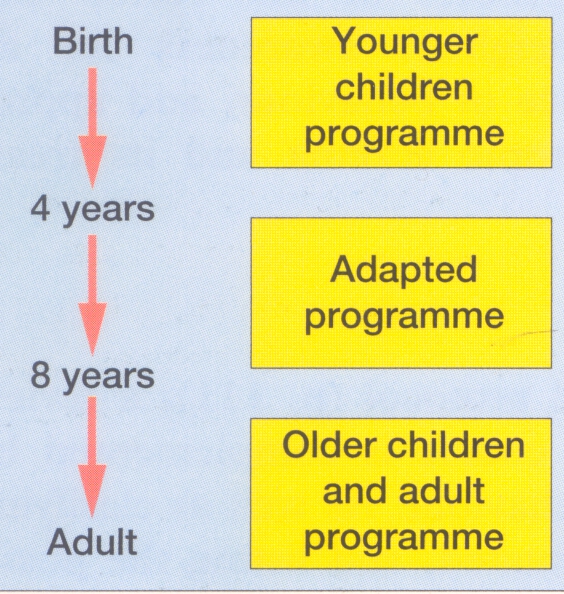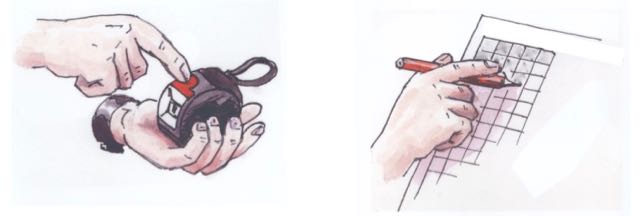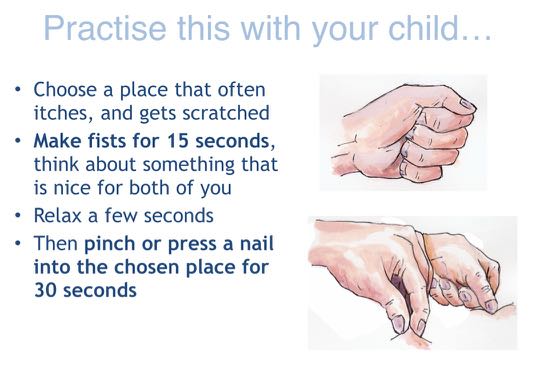Younger children, atopic eczema and habit reversal

The Combined Approach to atopic eczema is set out for practitioners in detail in the manual Atopic Skin Disease, with emphasis on a programme for Adults and Older Children. The chapter Working With Younger Children adapts the programme for the youngest child. The patient handbooks Live Without Eczema are now available for virtual clinics for those working online.
However, depending on the age of the child, the programme can be adapted further:

Registration
As with the programme for Adults and Older Children, effective awareness training before starting habit reversal with younger children can include use of a hand tally counter, but by the parents rather than by the child. This use of the tally counter then continues, as with Adults and Older Children, to provide a record of progress during treatment.

When adapted in this way the use of the tally counter is reduced to a defined daily 30 minute period that it is agreed will both be a feasible commitment for the parents, and will cover a time when scratching is thought to be quite likely: when watching TV, for example.
Each day then all scratching observed during this defined period is counted and recorded, in addition to the homework described in part one of the handbook for younger children and their parents.
Fists, and press-or-pinch
In addition to the use of general diversion and distraction strategies with younger children, this specific habit reversal intervention replaces scratching, and deals with itch, in the programme for adults and older children, and can also be successfully used by younger children. This involvement of the child in their own treatment can be important.
It is first taught to the parents, who then teach the child:

This needs to be explained and rehearsed at home over a few days, and then its use is prompted and encouraged. Congratulations are very important when it is used correctly.
Any impulse to scratch the skin is now dealt with by closing the hands into fists and holding them still, away from the skin. This can be described as "making the skin safe" - then healing can happen.
The skin pinch-or-press is only to be used if there is also an itch, and is then held in place until the itch goes.
Any itch always goes, and when it comes back, the fists are made again...
These two adaptations of the programme for Younger Children and their Parents were included by Peter Norén and his colleagues in the version of The Combined Approach - habit reversal with optimal topical treatment - used in their research published here:
The positive effects of habit reversal treatment of scratching in children with atopic dermatitis: a randomised controlled study
